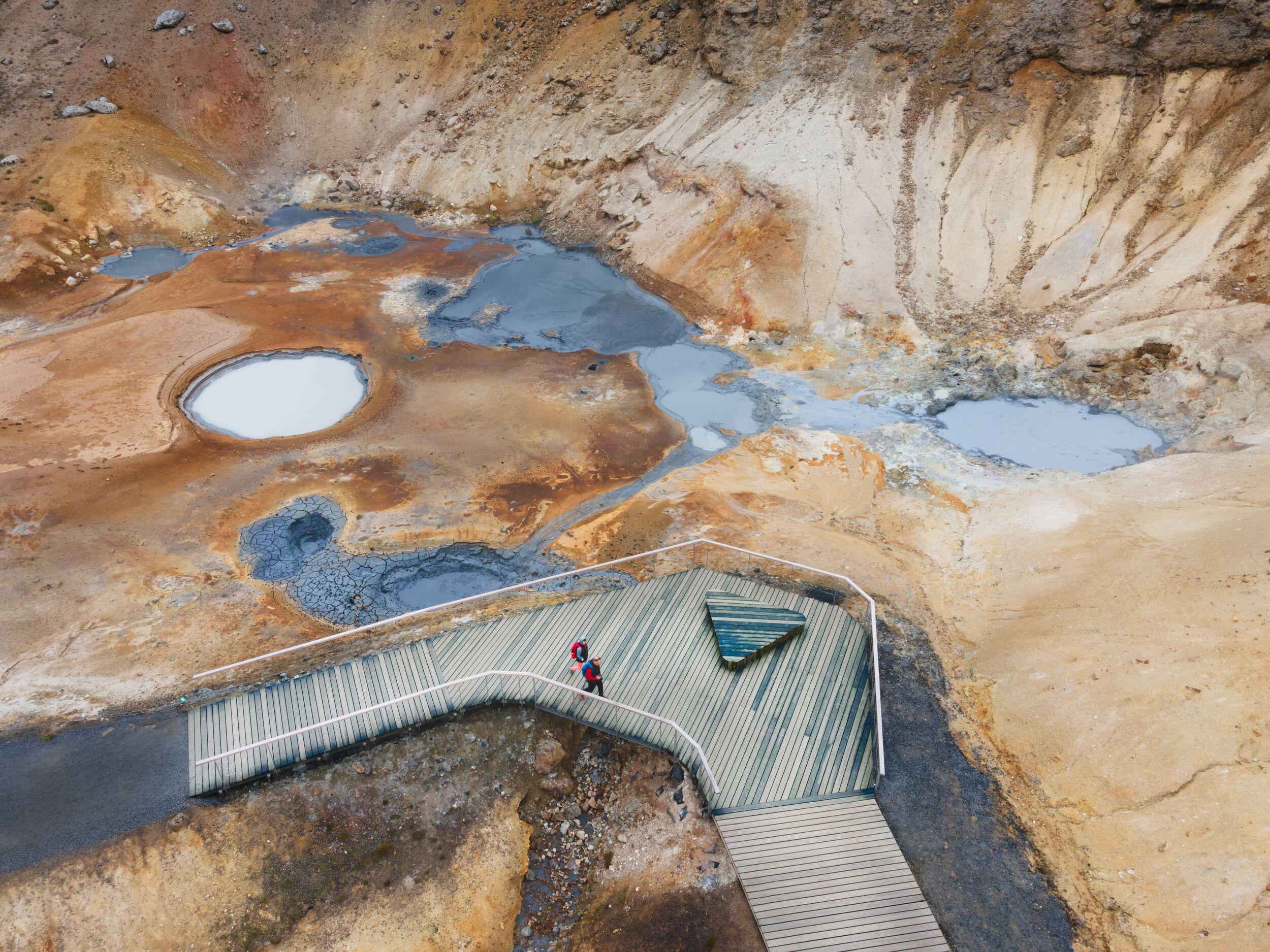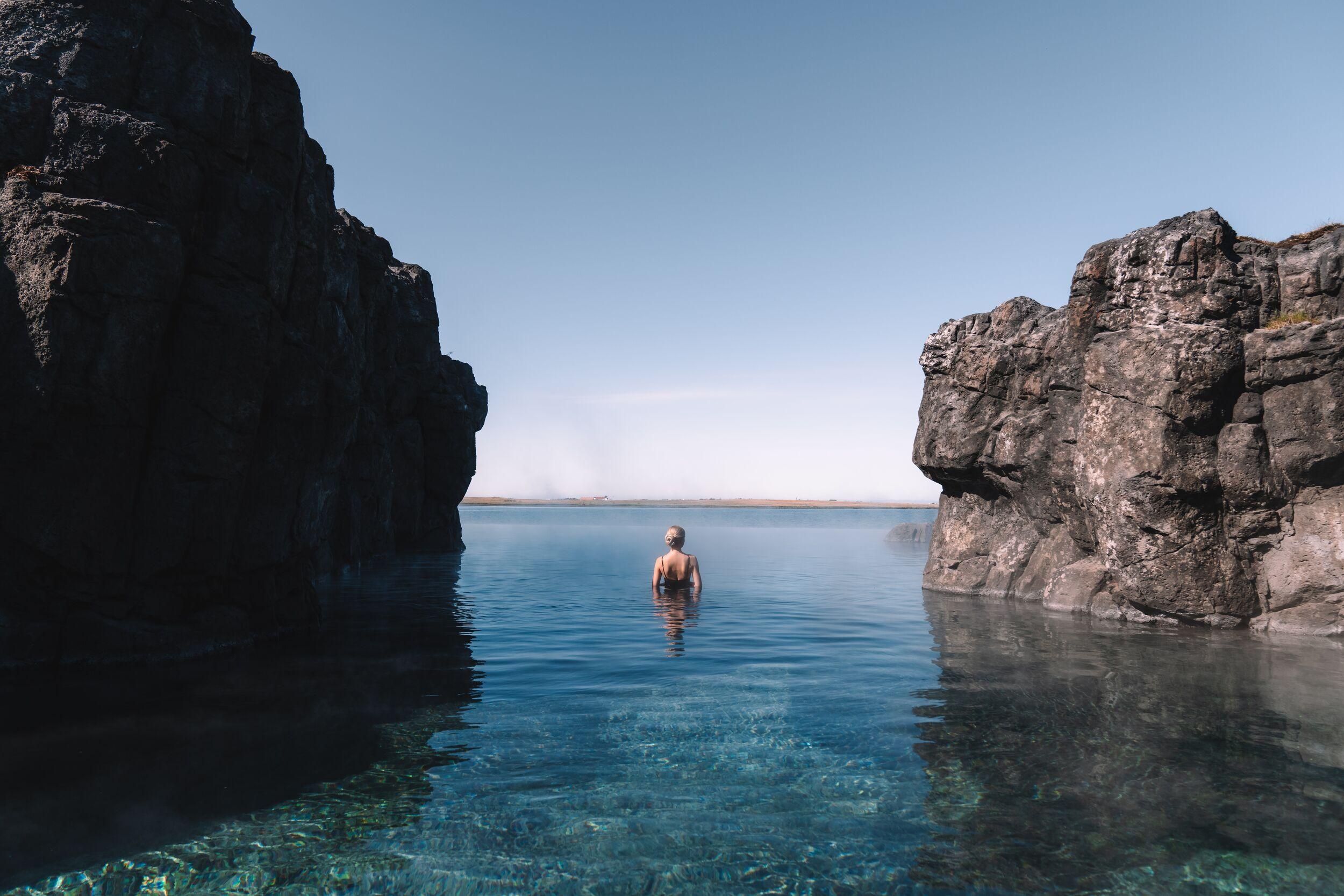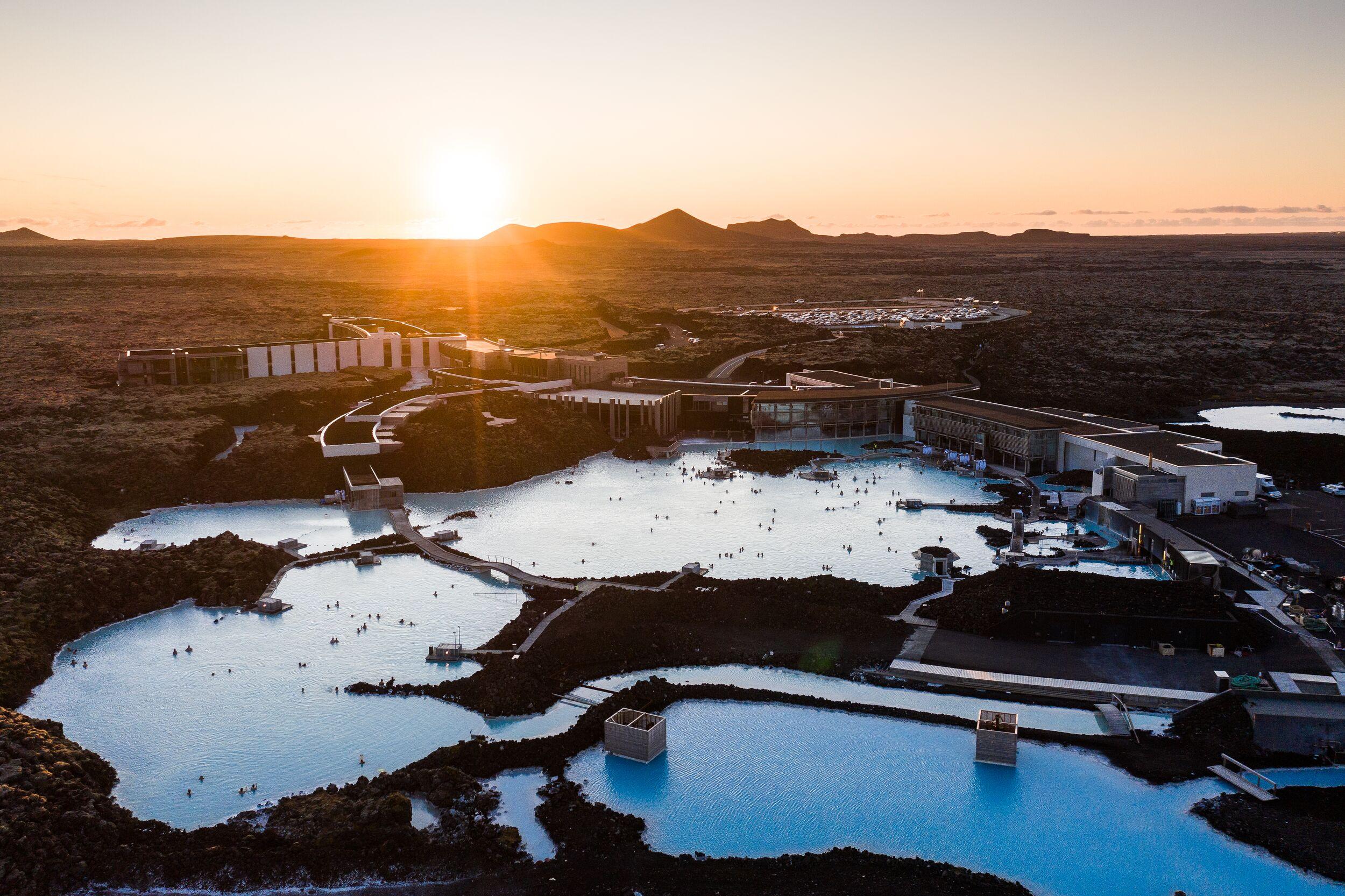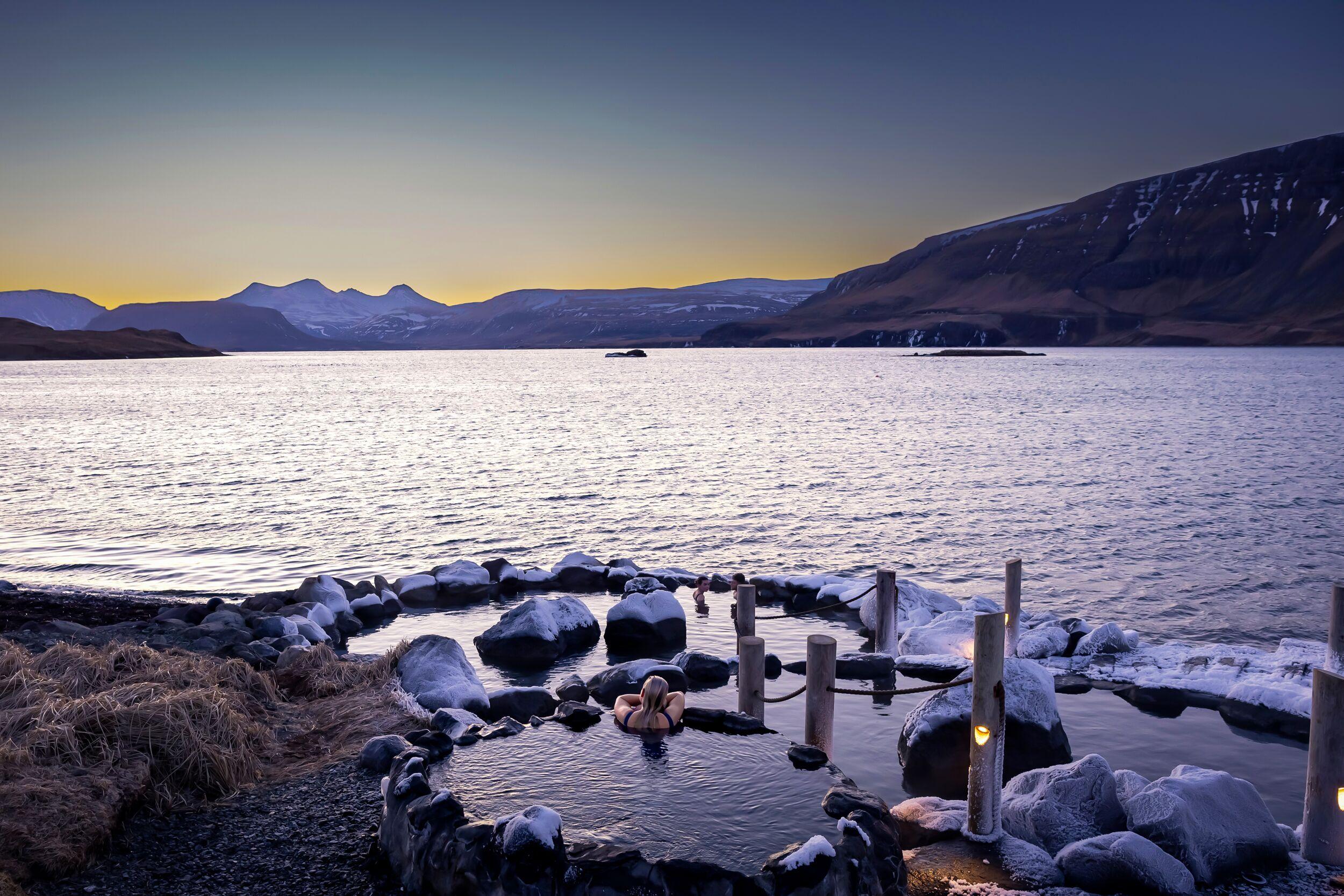
Seltún
Seltún is a geothermal area located on the Reykjanes Peninsula in southwestern Iceland. It’s renowned for its colourful and otherworldly landscapes, featuring hot springs, mud pots, fumaroles, and geothermal phenomena. Seltún offers visitors a chance to experience the dynamic geological forces that shape Iceland’s unique landscape.
The Reykjanes Peninsula is home to a striking, dramatic landscape comprising lava fields, volcanic craters, geothermal waters and hot springs, and lava caves. The region is also a hotbed for outdoor activities, including ATV riding, horse riding, and bathing in hot springs.
To get to the region, take Route 42 south from Reykjavík, about a 40-minute drive (36 km). From Grindavík and the Blue Lagoon, it is 30 kilometres, about 27 minutes, on Route 427.
The region’s geothermal activity attracts visitors from around the world. Seltún, characterised by its intense geothermal activity, is part of the more extensive volcanic system of Krýsuvík, where the Earth’s heat is close to the surface, resulting in a range of geothermal features.
One of the most striking aspects of Seltún is the landscape’s vibrant and diverse colour palette. The minerals in the soil create vibrant hues of red, yellow, green, and orange, making it appear as if you’ve stepped onto another planet.
You can find small pools of bubbling mud throughout the area caused by the interaction between hot water and gases. At Seltún, you can observe these mud pots in various sizes, emitting steam and producing characteristic “plopping” sounds. Meanwhile, fumaroles are also present, openings in the Earth’s crust from which steam and gases are emitted. At Seltún, you can see fumaroles releasing columns of steam into the air, creating an ethereal atmosphere.
It’s a popular area for outdoor enthusiasts. There are paths in the Seltún area that allow travellers to explore the geothermal features up close. The trails are well-maintained, and you can enjoy a leisurely stroll while observing some of the unique geological phenomena in Iceland.
However, to protect visitors and the delicate geothermal environment, boardwalks and viewing platforms guide you through the area. These platforms provide safe vantage points for observing the bubbling mud pots and steaming fumaroles. Always respect the natural space, leave nothing behind, and stay on the marked paths.
For those seeking more information, there are signs throughout the area providing information about the geothermal activity in the area, the geological history of the region, and the unique ecosystems that thrive in these extreme, uniquely Icelandic conditions.
Seltún is relatively easy to reach, located not far from the town of Grindavík, the Blue Lagoon and Keflavík International Airport.
Several other attractions and points of interest close to Seltún are worth visiting when spending time on the Reykjanes Peninsula.
Blue Lagoon:
Built on an 800-year-old lava field, the Blue Lagoon covers an area of 8,700 square meters (93,646 sq ft) and draws visitors from around the world to soak in its gloriously milky-blue waters amid a dreamlike atmosphere. The geothermally heated water ranges between 37-39°C and is heavenly any time of year. Enjoying the steamy air while soaking during the summer is lovely, especially on sunny days. And in the winter, a visit here is eerie and fantastic; watching as snow falls from the jet-black December sky or as northern lights dance across it while lounging in hot water is sublime.
Gunnuhver:
A short distance from Seltún, Gunnuhver is another geothermal area with impressive steam vents and hot springs. The name “Gunnuhver” is derived from a legendary ghost named Gunna, adding a touch of mystery and folklore to the site.
Bridge Between Continents:
Travellers can visit a spot where the Mid-Atlantic Ridge crosses Iceland, the meeting point of the Eurasian and North American plates. The small footbridge is a symbolic site connecting the two land masses, offering visitors an impressive view of the ridge. You can reach the bridge from Route 425, a 20-minute (20 km) drive south from Reykjanesbær.
Reykjanesviti Lighthouse:
This iconic lighthouse is located near the southwestern tip of the Reykjanes Peninsula. It offers sweeping views of the coastline and the surrounding ocean. The area around the lighthouse is also known for its rugged cliffs and birdwatching opportunities.
Krýsuvíkurbjarg Cliffs:
These cliffs are known for their stunning coastal scenery and abundant birdlife, including nesting seabirds. The ridges are particularly impressive when viewed from the sea during a boat tour.
Kleifarvatn Lake:
This picturesque lake is the largest on the Reykjanes Peninsula, surrounded by volcanic landscapes and offers opportunities for hiking and enjoying the serene surroundings.
Icelandic Museum of Rock’ n’ Roll:
The Icelandic Museum of Rock’ n’ Roll is a perfect stop for those who love the music of Björk, Sigur Rós, Kaleo, and Of Monsters and Men, and are interested in learning about other rock and pop acts from Iceland. Visitors can listen to the music of local artists, see instruments, and check out costumes worn by well-known local musicians, including one of Iceland’s biggest pop stars, Páll Óskar. Guests can also learn about the histories of some of the island’s most popular bands and singers. Interactive displays include a sound lab where you can have a karaoke-style sing-along or play drums, guitar, or bass.
Reykjanes Maritime Museum:
The Reykjanes Maritime Center houses 100 model boats built by a retired local sailor, Grímur Karlsson. Models on display include masted schooners of the mid-19th century and steam-powered trawlers of the 20th century. Information is available on the types of boats and when they were used.
Related tours

Volcanic Wonders with Grindavík Visit & the Sky Lagoon
Discover Iceland’s geothermal heart in the UNESCO-recognized Reykjanes Geopark, where continents meet and drift apart. Explore a vibrant geothermal area, hike to freshly-formed lava fields, and visit the resilient fishing village of Grindavík. This carbon-neutral journey ends with pure relaxation at Reykjavík’s Sky Lagoon, where you can soak in warm waters and unwind with a luxurious spa ritual.

Volcanic Wonders with Grindavik Visit
Once a bustling fishing village, Grindavík now serves as a stark reminder of nature’s relentless power. After a recent volcanic eruption forced the evacuation of its residents, much of the town remains uninhabitable, its landscape forever marked by the destructive forces of the earth.

Volcanic Wonders with Grindavik Visit & the Blue Lagoon
Embark on a carbon-neutral journey through Iceland’s stunning volcanic landscapes. Enjoy a refreshing hike across a lava field, formed by recent eruptions, and then unwind with a soothing soak in the healing geothermal waters. This perfect combination of adventure and relaxation offers an unforgettable way to experience the raw power and serene beauty of Iceland’s natural wonders.

Volcanic Wonders with Grindavik Visit & the Hvammsvík Hot spring
Discover Iceland’s geothermal wonders in the UNESCO-recognized Reykjanes Geopark, a dramatic landscape where continents drift apart. This carbon-neutral journey takes you through vibrant geothermal fields, new lava fields, and the village of Grindavík, before concluding with a serene soak at Hvammsvík Hot Springs.

